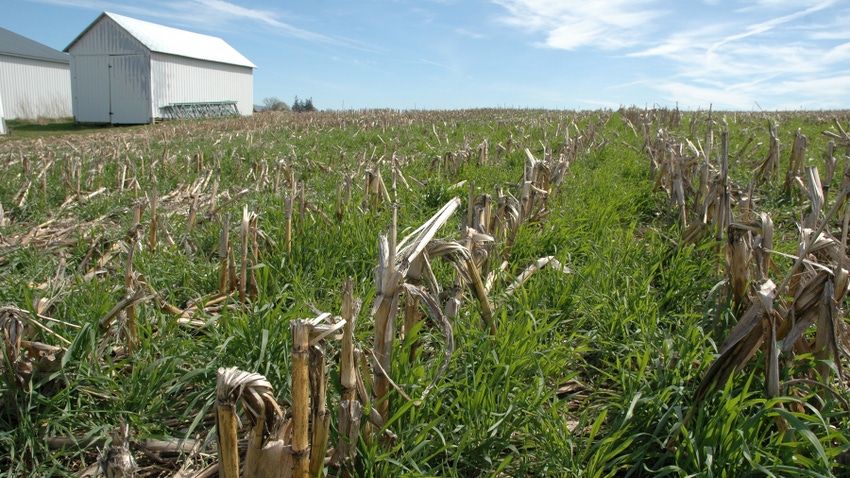
If you have cover crops in fields going to soybeans, one reason may be to get help with weed control. You’ve likely heard cover crops can offer big assistance against marestail. Maybe you’ve seen it for yourself. What about other weeds? Can you leave residual herbicides out of the burndown and expect weed-free fields after cover crops?
“We’ve taken a hard look at cover crops and weed control from several different aspects with several different weeds recently,” says Bill Johnson, Purdue Extension weed control specialist. “Growers want answers to this question: Can cover crops replace residual herbicides in the burndown application?
“For marestail and annual grasses, you probably can if residue levels are high. However, for every other weed we have evaluated, the answer is a definite ‘no.’ The good news is that with the active ingredients evaluated in our research, there seems to be minimal negative interactions between cover crops and residual herbicides.
“We saw the probability of additive effects on weed suppression provided by cover crops plus residual herbicides to be nearly 100%. The notable exception is common cocklebur. Full rates of residuals are needed there because residue will intercept some of the herbicide.”
Teasing out ‘truths’
Here are several facts about cover crops and residual herbicides that Johnson and his team uncovered through their research:
Termination timing. The earlier cover crops were terminated, the higher weed density would be by mid-August if not controlled by herbicides. Researchers terminated cover crops two to three weeks before planting and compared it to terminating at planting for grasses, giant ragweed and waterhemp. Weed concentrations later were higher in early-terminated plots in each case. The largest number of plants in August were for waterhemp, followed by giant ragweed and grasses.
Cool-weather issues. Unfortunately, herbicide antagonism can be a problem when spraying in cool weather, Johnson says. The team documented that cereal rye sprayed with glyphosate alone died much faster than cereal rye sprayed with glyphosate and Acuron. The trade-off, they discovered, is that residual herbicides are needed for improved weed control.
Biological activity. The theory goes that more cover crops mean more soil microbiology, which should mean more breakdown of herbicides in the soil. The researchers found mixed results. The use of cereal rye for three years increased beta-glucosidase and dehydrogenase activities by an average of 23% and 76%, respectively, compared to the fallow control, Johnson reports. That verifies that there was more soil microbe activity.
However, the increase in soil microbial activity as a result of cereal rye use did not increase atrazine or mesotrione degradation. The presence of a reasonable level of cereal rye biomass at the Pinney Purdue Ag Center trial reduced the initial concentrations of atrazine and mesotrione in the soil by 41% and 36%, respectively, compared to the fallow control.
Help from residual herbicides. The application of three residual herbicides at cover crop termination in one trial provided up to 83% and 95% reduction in weed biomass compared to termination with two or no residual herbicides, respectively, Johnson reports.
“Cover crops help with weed control, but we don’t pick up control of many weeds without including residual herbicides in the mix,” Johnson concludes. “That’s the bottom line.”
About the Author(s)
You May Also Like




